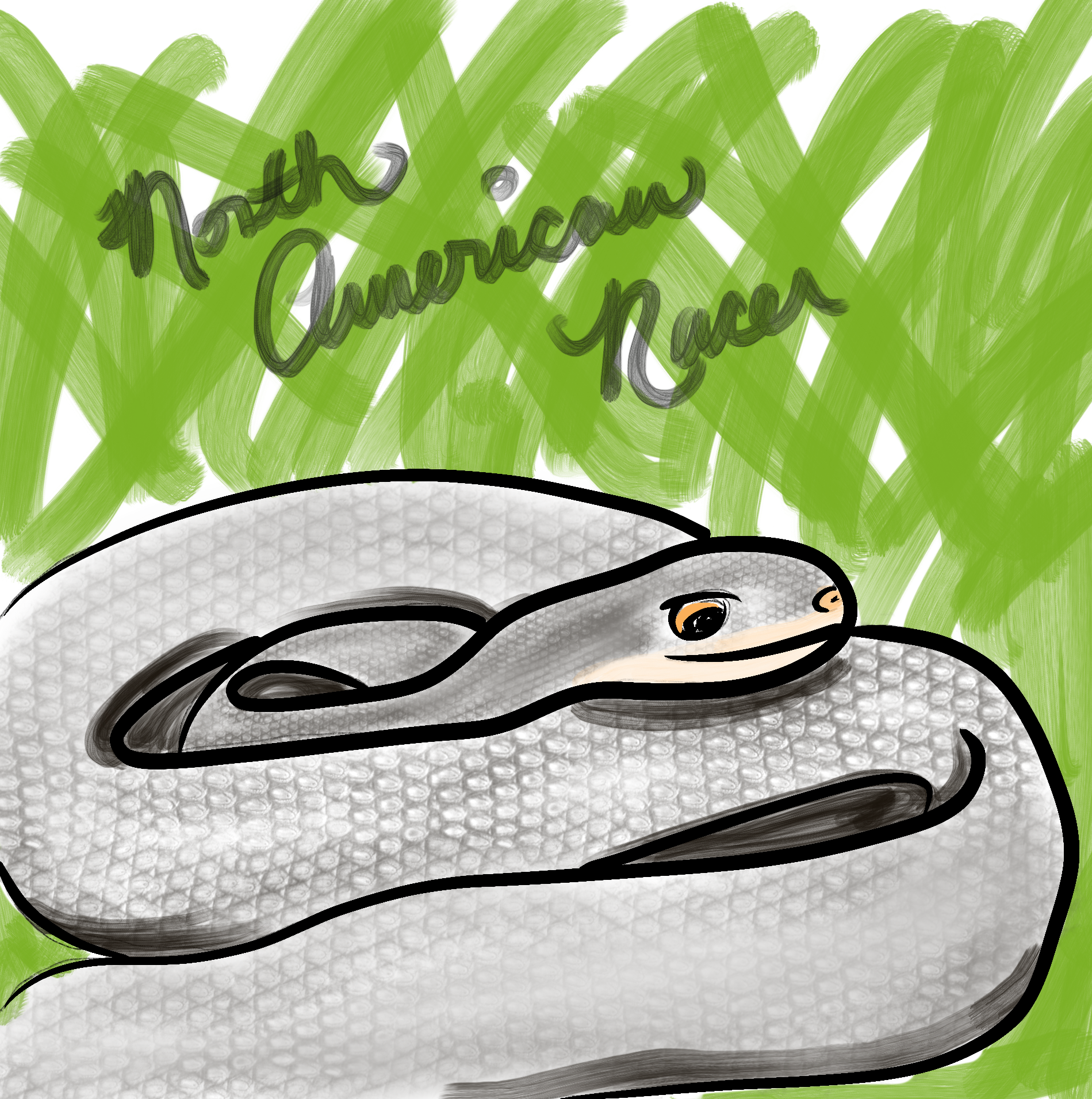133: North American Racer
This non-venomous colubrid snake lives across the entire eastern half of Colorado. Luckily it does not seem too perturbed by human interaction, so this is its historical range and it is not endangered. They like to live in dry, grassy areas, and in Colorado they are found in canyons, open prairies, and foothills vegetated by piñon-juniper woodland. They like to have a hiding place, so they will spend time in mammal burrows, under rocks and inside fallen logs and crevices. They hibernate between about November and March, and spend that time in similar hiding spaces, alongside other species who are also hibernating. In April, when they emerge, they have a leisurely routine – in the morning, they bask with their heads out of their burrows for at least a half hour, warming up to the 32 degrees C (89 F) that is their minimum active body temperature. They lay eggs in a nest in June-July, and eggs hatch around mid-August. Hatchlings are active in September and October before retreating to burrows for the winter.
They are hunters who primarily use scent and sight to find their prey, which are generally small mammals like shrew, voles, and cottontail rabbits; birds and eggs; lizards and their eggs; insects and spiders. They crush their prey or swallow them whole, often holding them in place with their tail as they do so. If attacked, they will coil their body rapidly, thrash around, and try to bite the aggressor. If that doesn’t work, they will play dead.
